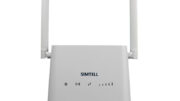Some people think it’s magic. Truth is, it’s not that different from other wireless technologies. One thing you can say for sure is that Bluetooth has succeeded beyond anyone’s expectations. Some of the original plans for Bluetooth didn’t quite pan out, though.
Bluetooth’s origins
First created in 1994, Bluetooth was actually envisioned as a way for two computers to communicate instead of using low-speed wired serial connections. At that time of course there were few cell phones and no smart mobile devices. The internet as we think of it today was only a few years old. Yet, the basic frameworks that were laid out back then still work today and work spectacularly.
Most wireless communication is designed for ranges from fifty feet to fifty miles. That won’t do for a personal system like Bluetooth. One of the things there is to like about Bluetooth is that it’s not a long-range technology. It works best within about ten feet, and rarely more than fifty feet. That makes it more secure because if someone is going to hack into your Bluetooth device they pretty much have to be where you can see them. That was done on purpose.
Broadcast frequencies
Bluetooth uses the same 2.4GHz frequencies as some routers, cordless phones and other devices, because this block of frequencies is designed for short-range consumer use. Most radio frequencies require detailed licensing so that they don’t interfere with each other, but because the range is so short that’s really not a consideration. If you do have a landline cordless phone though, you might get some interference from a Bluetooth device, although there’s not much you can do about it.
What sets Bluetooth apart
One of the best attributes of modern Bluetooth devices is that they pair intelligently. The first Bluetooth specs required a fairly complex pairing procedure where both devices were put into “pairing mode,” making them completely visible to anyone who was looking. Then one device sent a pre-shared code to the other device establishing the link. This worked pretty well in the early days when Bluetooth was limited mostly to phone headsets but as the technology expanded it became a little more cumbersome.
There was also an understanding that in some cases, there wasn’t a need for the level of security that Bluetooth was initially designed with. Later versions of the Bluetooth spec made it easier for less intelligent products to talk to each other by removing the passcode requirement on certain devices that could confirm their identities. This made it easier to pair a keyboard to a phone or a car to an audio player.
Bluetooth starts with that pairing procedure and once it’s done, both devices are essentially invisible to any unpaired devices. This helps with security right away since it’s pretty hard to hack a network that you can’t even find without expensive equipment. Once that you’ve completed the pairing process, the devices will connect automatically to each other until they are unpaired.
Where Bluetooth really succeeds
Bluetooth really shines with low-speed, low-bandwidth data transfers and that makes it perfect for things like keyboards, headsets, fitness trackers, audio systems, that sort of thing. It makes Bluetooth poorly suited for things like portable hard drives where you want to move a lot of data from place to place. It’s also a low-power spec which is perfect for mobile electronics. Wi-Fi (for example) uses a lot more power because it’s always searching for connections in a very active way. Bluetooth devices only search for new connections at a very specific time in a very specific way. Most of the time your Bluetooth-equipped phone isn’t actually using its Bluetooth radio at full power until another device comes and wakes it up.
Can someone hack your Bluetooth?
As to the question of whether Bluetooth can be hacked, the answer is definitely “yes.” The risks are pretty minimal, however. Unless your host device (the PC, phone or tablet) is in paring mode, it’s not likely that an attacker would be able to hack it using Bluetooth. Malware could create vulnerabilities as well. That doesn’t mean all your conversations are safe though. Bluetooth transmissions have encryption. It would be hard — but not impossible — for someone to listen in to your calls in real time. That wouldn’t stop them from recording the radio transmissions and possibly decoding them later. The could mean your phone calls, keys pushed, mouse movements, everything. But of course that person would have to be pretty close to do that.
Bluetooth isn’t much good for…
The Bluetooth group would love you to start using Bluetooth for more high-speed connections and pretty much as a Wi-Fi replacement for a lot of things like printers and display devices. The spec is out there but there isn’t a lot of consumer interest in using Bluetooth that way so it’s not likely to be a real factor in the future.
Bluetooth got a lot better
Bluetooth has evolved a lot especially in the last five years. The first real improvement allowed for much lower energy devices. At the same time we saw improvements in bandwidth that allowed for much better audio quality and low latency. This made Bluetooth an excellent replacement for wired headphones even when sound quality was important.
At the same time, pairing devices is now a lot easier. In many cases it’s as simple as putting two devices next to each other and possibly pushing a button. Bluetooth in cars has really improved as well. State-by-state regulations for handsfree devices are always driving manufacturers to improve.
Shop for the best Bluetooth products at Solid Signal
Whether you’re looking to add Bluetooth to an older piece of gear, or looking for a sleek new set of earphones at a great price, you’ll find the best selection of Bluetooth products at Solid Signal. Unlike those other sites you shop at, you’ll also get plenty of free tech support. You can even call us on the phone at 888-233-7563. Believe it or not, a real person in our 100% US-based call center will answer.





